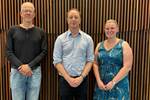Rocket Lab completes second PRE-FIRE rocket launch
The second of two Electron launches for NASA successfully lifted off and deployed a climate monitoring satellite just 11 days after the first launch.
Rocket Lab USA Inc. (Long Beach, Calif., U.S.) has successfully completed the second Electron launch for NASA’s Polar Radiant Energy in the Far-InfraRed Experiment (PRE-FIRE) climate change-focused mission, completing a turnaround of two launches within 11 days.
“PREFIRE and Ice” lifted-off from Rocket Lab Launch Complex 1 in Mahia, New Zealand, at 3:15 p.m. NZST (11:15 p.m. ET) on June 5, deploying the second of two satellites to a 525-kilometer orbit. The first mission, “Ready, Aim, PREFIRE,” was launched on May 25 from the same launch pad, demonstrating Rocket Lab’s ability to launch consistently and in quick succession to meet customer mission requirements.
With both satellites now in orbit, they will crisscross the Arctic and Antarctic to study heat lost to space from the Earth’s polar regions. Heat loss measurements collected by the PREFIRE mission will help to improve climate and ice-loss models to better predict Earth’s ice, sea level and weather changes. The mission is expected to operate for 10 months.
The Electron vehicle has now delivered 185 satellites to space across all its launches, with this mission being Rocket Lab’s 49th Electron launch overall and seventh mission of 2024. Electron is said to remain the U.S.’ second-most frequently launched rocket annually and one of the most frequently launched rockets globally.
Details for Rocket Lab’s 50th Electron launch will be released in the coming days.
Related Content
-
Orbital Composites wins award from U.S. Space Force to build space factories for antennas
Partners Axiom Space, Northrop Grumman Space Logistics and Southwest Research Institute will help advance ISAM technologies for kilometer-scale LEO antennas, space stations and GEO applications, targeting space factory in 3-5 years.
-
On the radar: Cryogenic testing of composites for future hydrogen storage
Netherlands, U.K., France, Germany and the U.S. build up test capability, look at thermoset and thermoplastic composite materials.
-
Low-cost, efficient CFRP anisogrid lattice structures
CIRA uses patented parallel winding, dry fiber, silicone tooling and resin infusion to cut labor for lightweight, heavily loaded space applications.

















